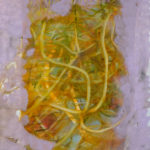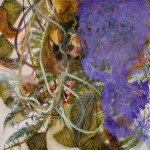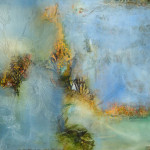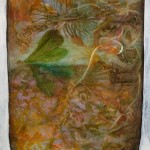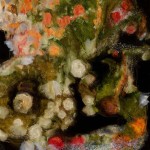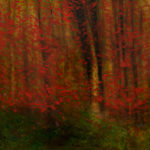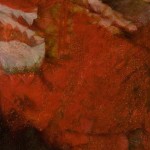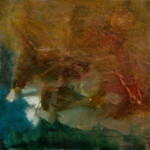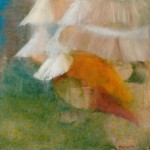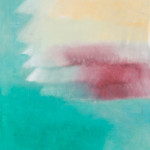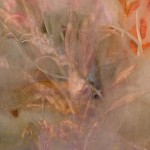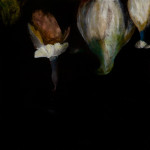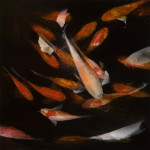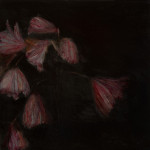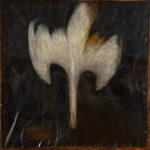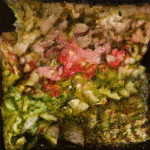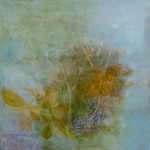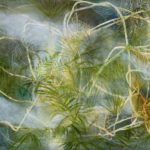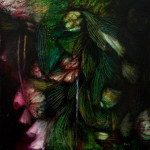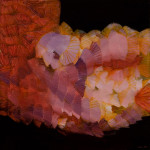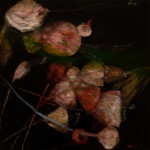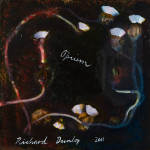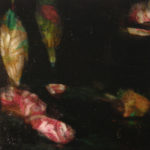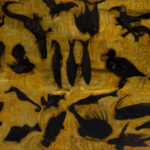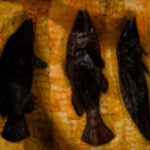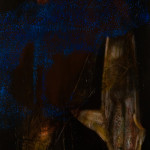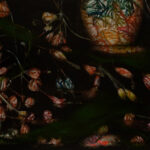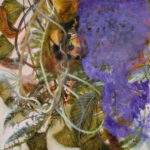- 2011 acrylic and oil on eucalyptus bark 90 x 62 cm, Sold
- 2011 oil on Belgian linen 130 x 80cm, Sold
- 2011 oil on Belgian linen 115 x 200cm, Sold
- 2003-2011 oil on canvas 90 x 90cm, Sold
- 2010-11 oil on canvas 150 x 180cm, Sold
- 2011 oil on Belgian linen, 200 x 115cm, $22,000
- 2011 oil on Belgian linen 61 x 61cm, Sold
- 2011 oil on canvas 180 x 150cm, $25,000
- 2011 oil on Belgian linen 152 x 152cm, Sold
- 2011 oil on Belgian linen 152 x 152cm, Sold
- 2011 oil on Belgian linen 152 x 152cm, Sold
- 2011 oil on Belgian linen 61 x 61cm, Sold
- 2011 oil on Belgian linen 122 x 122cm, Sold
- 2011 oil on Belgian linen 152 x 122cm, $25,000
- 2011 oil on Belgian linen 60 x 60cm, Sold
- 2011 oil on Belgian linen 122 x 122cm, $18,000 (unframed)
- 2011 oil on Belgian linen 61 x 61cm, Sold
- 2011 oil on canvas 148 x 122cm (signed verso), Sold
- 2011 oil on canvas 40 x 40cm, Sold
- 2011 oil on canvas 152 x 122cm, Sold
- 2011 oil on Belgian linen 76 x 72cm, Sold
- 2011 oil on Belgian linen 60 x 60cm, Sold
- 2011 oil on Belgian linen 152 x 152cm, Sold
- 2011 oil on Belgian linen 90 x 90cm, Sold
- 2011 oil on Belgian linen 60 x 60cm, Sold
- 2011 oil on Belgian linen 152 x 152cm, in gilded frame, $30,000
- 2011 oil on canvas and collage of canvas on marine ply 120 x 120cm (framed under perspex), Sold
- 2011 oil on Belgian linen 90 x 90cm, $9,000 (unframed)
- 2011 oil on Belgian linen 122 x 122cm, Sold
- 2011 oil on canvas 150 x 180cm, 22,000
- 2011 oil on Belgian linen 60 x 60cm, Sold
- 2011 oil on Belgian linen 122 x 122cm, Sold
- 2011 oil on Belgian linen 60 x 60cm, Sold
- 2011 oil on Belgian linen 90 x 90cm, Sold
- 2011 oil on linen 60 x 60cm, Sold
- 2011 oil on Belgian linen 180 x 300cm, Sold
- 2011 oil on canvas 90 x 90cm, Sold
- 2011 oil on Belgian linen 122 x 152cm, Sold
- 2011 oil on Belgian linen 200 x 115cm, Sold
- 2011 oil on Belgian linen 115 x 200cm, $22,000
- 2011 oil on canvas 90 x 90cm, Sold
“Using the real world as his starting point, Dunlop plays with images and surfaces in an impressive fashion. The dark, luminous surfaces of some of his paintings in this exhibition also seem to be a nod to the works of Flemish masters. Nature has, after all, a rejuvenating power and you can feel that healing energy in these paintings. These landscapes or still lifes (call them what you will) are derived from the artist’s imagination. Inspired by the natural world, he has manipulated it to his own ends. There’s a reverence at work here, reflected in the titles. But Richard doesn’t approach the landscape with religiosity (he describes himself as “superstitious but not religious”) although there is metaphysical mystery at work.” – Phil Brown, 2011
“I don’t know how you make the paint move and pump with its own blood like that. When you go right into your paintings, it is like you’re stepping behind a screen, and the picture starts again, and it is moving and alive, but it’s not the beer I swear it. I was getting a ‘boner’ in front of ‘The Red Violin’ ” – Ben Quilty, 2011
“There is poetry to the works of Richard Dunlop. His paintings ‘rhyme’ perfectly with nature. A cursory glance would have you believe that they were illustrations of the natural world, but nothing could be further from the truth. He repeatedly invents new stand-alone microcosms. Each work has its own reality and inner coherence which can convince a viewer that they are looking at something they have seen, but it is the artist who makes us see afresh. These evocative works explore the underlying mysteries of nature, decay, beauty, continuity and impermanence. Painting is a natural part of Dunlop’s life, as integral as eating and breathing, so each painting has an organic and unique life of its own, consuming weeks and sometimes months of the artist’s time. These fertile activities can consist of up to 30 layers of paint, before a resolution is settled upon.” – Emily Lynch, 2011
“I like to make paintings whereby people can enter a world, like a great movie can transport you to another place – if you stare (even on-screen) at a pic like ‘Vessel’, or ‘Wild Orchid’ for about 3 minutes straight or intermittently for a while, hopefully a viewer will see the depth and movement and internal order of a picture begin to slowly materialise. Because of the layering of the painting, the appearance is intended to differ according to the light at various times of day or viewed from different angles in a room, as various transparent colours and forms ascend or recede.” – Richard Dunlop 2011
“In other works in the exhibition, Dunlop reveals a much darker sensibility. In the mighty Last Night with a Great White (Two Fish Inside) of 2011, the torso of a shark hangs suspended in a dark interior space. Cut in half the animal’s internal cavity is revealed, in which Dunlop paints two fish laying side by side. The work immediately calls to mind the great genre painting by Dutch master Rembrandt van Rijn, Slaughtered Ox of 1655, held in the Louvre.” – Marguerite Brown Curator MFA
“There is rarely a millimetre of pigment or detail that is not intended to be there.” – Andrea Rosen NY
“Full fathom five they father lies/ of his bones are coral made/ Those are pearls that were his eyes”. – William Shakespeare, The Tempest 1610
“I can walk around it, work from the four sides and literally be in the painting.” – Jackson Pollock 1947 in reference to Full Fathom Five
“Dunlop does not work to plan. The picture and the application of the paint is an organic process. He
uses the medium in multitudinous ways, thinning it onto watercolour-like glazes, applying and
removing it, scratching the surface, and often uses his fingers to smear, smudge and blot. He enjoys
composing and deconstructing the image, a little like how the natural world works, starting with a
new life, the proliferation of such and then decomposition. Having said that, there is also often a
necessary sparseness to these paintings, a void among the layers.” – Emily Flynt

